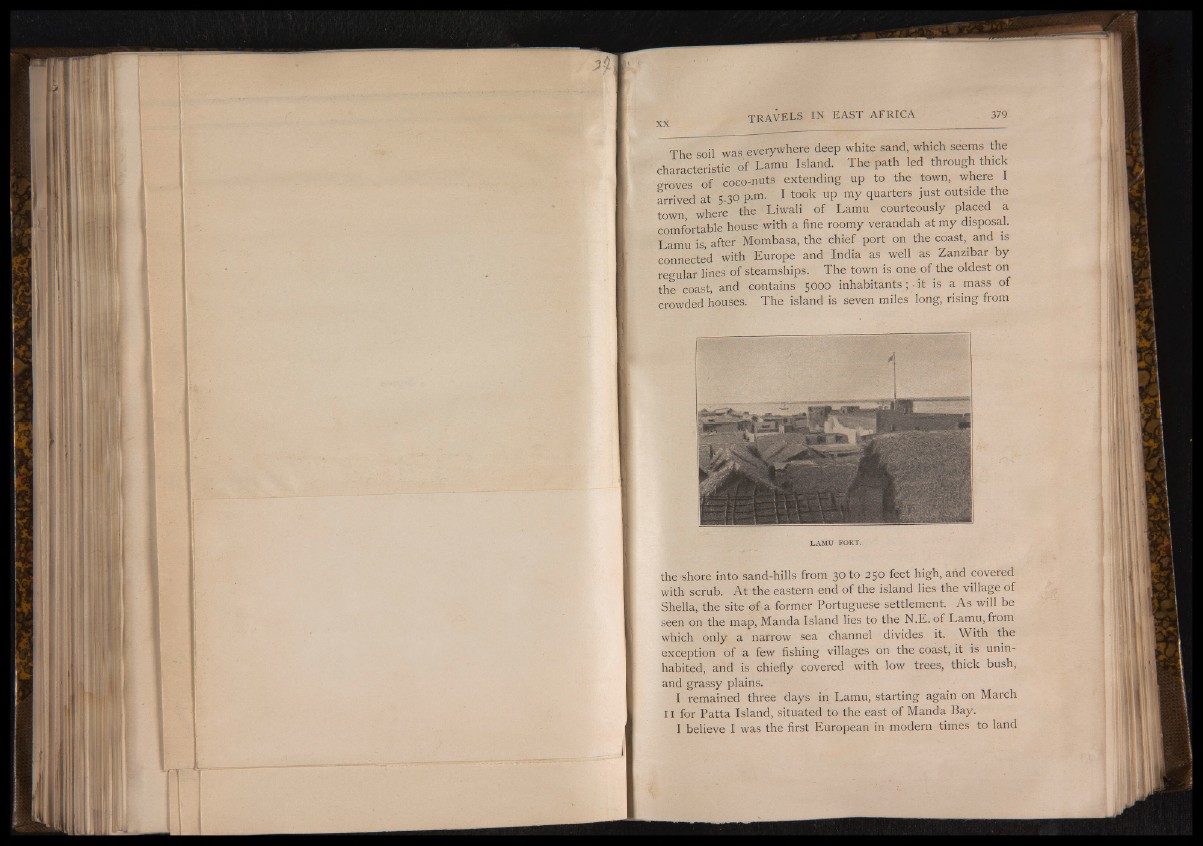
IH 1(1 Hill 111 ii
i f I
Il I
1 II
III
i r
■
(I
XX
The soil was everywhere deep white sand, which seems the
characteristic of Lamu Island. The path led through thick
oves of coco-nuts extending up to the town, where I
arrived at 5.30 p.m. I took up my quarters just outside the
town where the Liwali of Lamu courteously placed a
comfortable house with a fine roomy verandah at my disposal.
Lamu is, after Mombasa, the chief port on the coast, and is
connected with Europe and India as well as Zanzibar by
regular lines of steamships. The town is one of the oldest on
the coast, and contains 5000 inhabitants ; ■ it is a mass of
crowded houses. The island is seven miles long, rising from
LAMU FORT.
the-shore into sand-hills from 30 to 250 feet high, and covered
with scrub. A t the eastern end of the island lies the village of
Sheila, the site of a former Portuguese settlement. As will be
seen on the map, Manda Island lies to the N.E: of Lamu, from
which only a narrow sea' channel divides it. With the
exception of a few fishing villages on the coast, it is uninhabited,
and is chiefly covered with low trees, thick bush,
and grassy plains.
I remained three days in Lamu, starting again on March
11 for Patta Island, situated to the east of Manda Bay.
I believe I was the first European in modern times to land